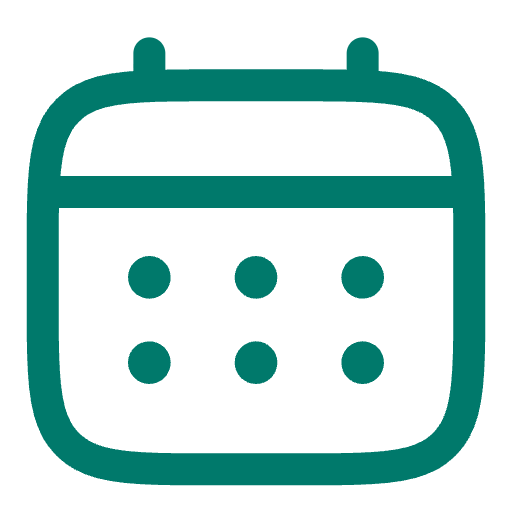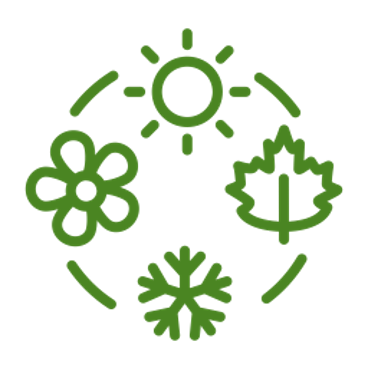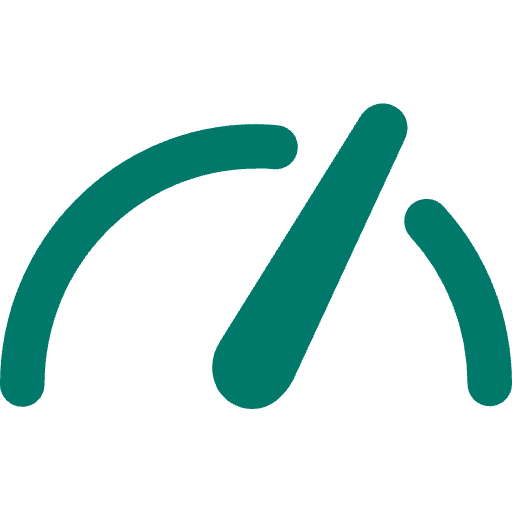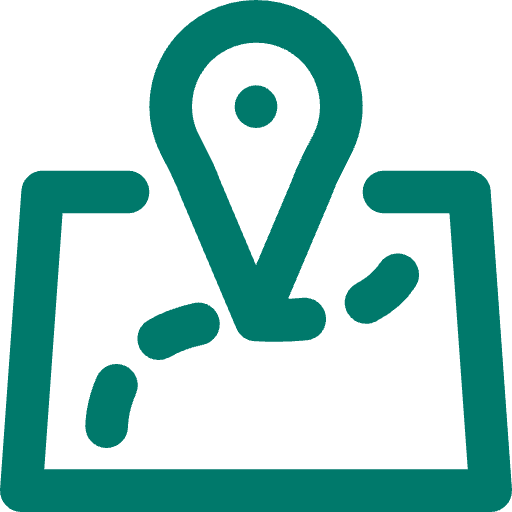
Nag Tibba Trek
TREK DIFFICULTY
Easy
TREK DURATION
2 Days
HIGHEST ALTITUDE
9,915 feet
GROUP SIZE
12
TREK DISTANCE
20 Km
BASECAMP
Uttarakhand
BEST TIME
All Year
PICKUP POINT
Dehradun
Nag Tibba Trek Overview:
Nag Tibba Trek lies on the foothills of the Garhwal Division, northeast of Mussoorie, and is a popular weekend trekking destination in Tehri District of Uttarakhand, India. This trek is one of the best short treks in Uttarakhand. It passes through the Nag Tibba Peak which is at an altitude of 3,022 m and offers spectacular views of Mussoorie, Vikasnagar, the Bandarpunch range, and spurs created by the Yamuna River valley. Nag Tibba is a typical ridge peak and the highest peak of the Lesser Himalayan range of Uttarakhand, making it one of the popular spots for hiking. In fact, along with the Pir Panjal and Dhauladhar, the Nag Tibba range forms one of the 3 main ranges of the lower Himalayas. The trek route of Nag Tibba takes you through dense forests and offers breathtaking views of the surrounding valleys. It is mentioned in the very famous book '7 Years in Tibet' which chronicles the escape of Austrian climber Heinrich Harrer from the British jail into Tibet. The Nag Tibba Trek is a must-do for all trekking enthusiasts and nature lovers who want to explore the beauty of the Trek.

Day 1: Dehradun to Pantwari (1,400 m) to Kathian Campsite (2,265 m)
Day 2: Trek from campsite to Nagtibba top(3,020 m) and back to Pantwari; Drive back to Dehradun.
Points to Remember:
- Documents Required: Trekkers should carry a copy of the Aadhar Card (Indian National) or a copy of the Passport and visa(International Tourist) along with the Medical Certificate signed by a Doctor.
- Accommodation: Trek stays in an A-Shape tent/ North Face Tent. Built to withstand extreme weather conditions and, at the same time, make you comfortable after a hard day’s trek.
-
- Do not litter the Mountains. Kindly carry all the non-biodegradable bags with you and throw them in the dustbin.
- Please do not feed animals (especially dogs) with biscuits.
- Biscuits can cause health issues; their fur starts shedding, which makes it difficult for them to survive in the winter.
- Cloakroom: We have a cloakroom facility available for extra luggage. Every trekker is permitted to leave their luggage behind at no charge.
In Himalaya Shelter, we provide you with the option to customize your trekking experience. Whether you're a solo traveler, a group of friends, or a family, you can opt for our personalized tailor-made trekking program. This customized trek will be exclusively designed for you, taking into account your specific requirements for transportation, accommodation, meals, and any other premium facilities you may need during the trek. No other participants will be added to your group. Choosing a customized trek will enable you to fully enjoy the trek with your loved ones. Click here to learn what a Customized Trekking program looks like.
The Nag Tibba Trek gets its name from the temple dedicated to Snake God or Nag Devta, a significant figure in Hindu mythology. Snake worship has always held a crucial status in Hinduism as they represent rebirth, death, and mortality, symbolically being 'reborn' with the shedding of their skin. In ancient times, religion and worship were responses to a way of life rather than a reason for existence, and snakes were given a devoted community. In some places, snake gods are associated with fertility. In Hindu mythology, there are many snake gods myths and iconographic symbols associated with them, such as Sheshnag (Vishnu's resting couch), Anantnag (the endless snake), Kaliya (Krishna's dance), Vasuki (churning of the ocean), Padmanabha (guardian snake, especially in South India), and Manasa Devi (snake goddess). For the villagers in the Nag Tibba valley, Nag Devta is the protector of their cattle and sheep, which are their biggest assets.
The Nag Tibba Trek is a popular choice among beginners and experienced alike and is one of the best top 5 weekend treks near Dehradun, Rishikesh and Delhi. It is renowned for its breathtaking views of the Himalayan mountains, clearings, and walking through enchanting forests, cultural exploration and many more. Here, we'll explore some of the captivating highlights that make the Nag Tibba Trek an unforgettable adventure:
1. Panoramic Himalayan Views:

When you reach the summit of Nag Tibba, standing at an impressive elevation of 9,915 feet, you're treated to a magnificent spectacle of the snow-capped Himalayan peaks that surround you. Among them, Swargarohini, Bandarpunch, Kala Nag, Srikantha, and Gangotri are some of the notable peaks you can spot. The breathtaking panorama from this vantage point transforms the entire trek into an utterly rewarding experience.
2. Easy to Moderate Difficulty of the Trek:
Designed to cater to both beginners and seasoned trekkers, the Nag Tibba Trek is celebrated for its manageable difficulty level. The ease of the trek is evident from the fact that many people choose it for their first solo trip and successfully complete it. The well-marked trails eliminate any technical challenges, ensuring accessibility without sacrificing the rewarding nature of the adventure. This characteristic makes it an ideal trek for those looking to embark on their first Himalayan expedition without compromising on the grandeur of the experience. Read about what the experience of the Nag Tibba Trek is like as a first Himalayan trek.
3. Diverse Landscapes During the Nag Tibba Trek:

One of the most captivating aspects of this trek is the ever-changing scenery that unfolds with each step. Traverse dense forests adorned with majestic oak and rhododendron trees, and then emerge into expansive meadows. It's like taking a journey through different types of nature, each with its own special charm.
4. As a Weekend Getaway:
The Nag Tibba Trek's allure is further heightened by its convenience as a weekend retreat, easily accessible from Delhi or Dehradun. With a duration of two or three days, this trek provides a perfect respite from the hustle and bustle of city life. It's a refreshing journey that effortlessly combines adventure with moments of relaxation, providing participants with the opportunity to soak in the unspoiled beauty of the Himalayas without the need for an extended time commitment.
5. Camping Experience During the Nag Tibba Trek:

Making the adventure even more exciting, the Nag Tibba Trek gives you a special chance to camp under the starry sky of the Himalayan night. Surrounded by Himalayan peaks, this camping experience adds a bit of magic to the journey, helping you feel a strong connection with nature. It's a time to relax, think, and really enjoy the untouched beauty that the Himalayas share with those who love to explore.
6. Rhododendron Arboreum on the Trek:
The scenic Nag Tibba trek of the Garhwal region of Uttarakhand not only provides an excellent view of the Himalayan from a great height but also to see the wonders and beauties found in nature like – landslides, boulders, etc. Arboreum Rhododendron is one of the typical mesmerization that comes with this Himalayan hiking area. The best period for observing the flower blooming of Rhododendron Arboreum in the Nag Tibba Trek is usually during spring –from March to April. During this season, the forest turns into a cacophony of colors as wild species and sub-alpines position their colorful floras. Thus, the exquisite flowers not only present a sight of visual delight for human beings but also serve as a shelter to different birds and insects thus contributing towards the diversification of life on earth.
7. Cultural Significance of the Region:
The region had the zeal to have a cultural momentum and thus portrays that in its rhododendron. During the spring, there are usually festivals that involve the local communities celebrating the season when flowers bloom because various products of these types count on us in myriads. It is medically known that the nectar of these flowers bears medical preparatives and, at times it may be used in some traditional remedies. You can learn more about how the festivals of Uttarakhand are celebrated in spring.


How to Reach Pantwari to Nag Tibba

On your own Pantwari to Nag Tibba

How to Reach Dehradun by Train

How to Reach Dehradun by Flight
The best time to trek Nag Tibba for an exceptionally pleasant experience is between March to April (Spring) and December to February (Winter). During these months, the weather is ideal for trekking, offering clear skies and comfortable temperatures.
1. Trek in Spring (March-April):
- Temperature and weather:
The temperature is great during this time; it varies between 10 to 15 °C during the day and 10 to 5 °C at night. The day is sunny and the weather is pleasant.
- Ease of trekking:
This is a great time of the year as the trails are not muddy and hence it is Perfect for beginners, families, and children aged 10 years and above.
- Flora and scenery:
There are fresh rhododendrons as well as other wild flowers that bloom during spring and enrich the trail with a variety of natural colours. During the trek at this time, the views of the surrounding mountains like Swargarohini, Bandarpoonch and Gangotri peaks look extremely beautiful against the backdrop of crystal blue sky.
2. Trek in Winter (December-February):
- Temperature and Weather:
The temperature during the day ranges between 5 to 10 °C and can drop to -5 °C at night. The weather is quite cold at this time and the higher altitudes of the trail are covered with snow.
- Ease of Trekking:
The main feature of this route is that it is covered with snow, which makes it quite interesting and physically quite challenging for the travellers. Though the journey is tough in winters, the thrill and natural beauty of the snow-clad areas make it an amazing experience.
- Snow and View:
Trekking offers a spectacular view of the snow-clad areas, where the surrounding mountains appear high with snow. Well, the presence of snow makes it thrilling, while the view of the Himalayas is so spectacular that you get mesmerized.
Nag Tibba is one of the best winter treks in Uttarakhand, however, the Trek extends its warm welcome in every season, leaving the choice up to your preferences. Whether it's the allure of a quick day hike or an outdoor adventure, camping under the sky, or witnessing the mesmerizing sunrise and sunset, this trek has it all. It's an ideal destination for spending quality time with family within a short day, offering a beautiful experience in the lap of nature.

Notice: All trekkers are strictly advised not to carry unnecessary plastic items such as disposable bottles, single-use cutlery, polythene bags, and food wrappers during the trek. We encourage the use of reusable bottles, tiffin boxes, and cloth bags to minimise waste and protect the fragile Himalayan ecosystem. Your cooperation is essential in ensuring a clean and sustainable trekking experience.
For trekking on a Himalayan trek it requires careful planning and adherence to safety precautions to ensure a safe and enjoyable trekking experience. Here is a list of 11 essential safety precautions and protocols for the Nag Tibba Trek:
1. Acclimatization:
- Importance: Acclimatization helps stabilize oxygen levels in the body. It is crucial for preventing altitude sickness and maintaining physical fitness.
- Protocol:
- Spend an extra day at the Pantwari base camp or intermediate points such as Dehradun or Mussoorie to adjust to the altitude. However, the chances of Acute Mountain Sickness (AMS) or other sicknesses during the Nag Tibba Trek are minimal. Nevertheless, proper acclimatization will enhance your trekking experience compared to trekking without adjusting to the change in altitude.
- Ascend gradually, avoid ascending too quickly.
- Climb high and sleep low. After reaching the campsite, hike to a higher elevation than the campsite's altitude, spend some time there, and then return to the campsite.
- Reduce strength exercises and increase yoga practice with Pranayama or other slow breathing techniques.
2. Weather Preparedness:
- Importance: The weather during the Nag Tibba Trek can be unpredictable, with sudden rainfall and variation in temperature. Knowing weather facts helps trekkers determine the best time to start or not start their trek, and be prepared for any expected weather fluctuations during the hiking.
- Protocol:
- Check weather forecasts regularly.
- Be prepared for sudden changes by carrying appropriate gear, such as waterproof jackets or a poncho, warm fleece, and extra pairs of quick-dry socks.
- In the mountains, afternoon rain is more common than other times of the day. So, make sure to start and end your hike before noon.
- If it’s raining continuously, pause on the hike on the spot but avoid stopping near water streams and narrow valleys. Try to pass away these areas as quickly as possible.
3. Hydration and Nutrition:
- Importance: Staying hydrated and well-nourished helps maintain energy and health.
- Protocol:
- Drink plenty of water at regular intervals throughout the trek.
- Carry high-energy, easy-to-digest foods like nuts, energy bars, and fruits.
- Avoid taking alcohol.
- Avoid consuming sugary foods or drinks during the trek. Excess sugar increases blood glucose concentration, leading to fatigue.
4. Health and First Aid:
- Importance: Immediate response to health issues can prevent serious complications.
- Protocol:
- Carry a comprehensive first aid kit, including altitude sickness medication, and be familiar with basic first aid procedures.
- Inform your trek leader of any pre-existing health conditions.
5. Safety Gear:
- Importance: The right gear can prevent injuries and keep you safe in adverse conditions.
- Protocol:
- Wear sturdy, broken-in trekking boots with good ankle support.
- Dress in layers to manage your body temperature.
- Carry a reliable backpack with a rain cover and other essentials such as a headlamp, rope, oxygen cylinder, gaiters, and microspikes.
6. Emergency Preparedness:
- Importance: Quick action is vital in emergencies.
- Protocol:
- The nearest hospital is located in Mussoorie, which is nearly 60 km from the Pantwari base camp.
- Keep emergency contact numbers.
- Ensure that your trek leader has communication devices such as a satellite phone or walkie-talkie in case of an emergency. Also, whenever you get a mobile network, keep updated the basecamp or your emergency contact person.
- Make sure you have appropriate adventure insurance that covers trekking in high-altitude areas.
7. Navigation and Trail Safety:
- Importance: Navigating high altitudes and challenging trails requires caution and skill.
- Protocol:
- Follow your guide.
- Follow marked trails and use a compass, maps, or GPS devices to avoid getting lost on the trail.
- Pay attention to trail markers and avoid venturing off the path.
8. Wildlife Awareness:
- Importance: Encounters with wildlife can be a risk.
- Protocol:
- Maintain a safe distance from animals.
- Avoid leaving food unattended and keep your campsite clean to avoid attracting wildlife.
9. Group Coordination:
- Importance: Staying connected with your group ensures collective safety.
- Protocol:
- Maintain regular communication with your group.
- Follow the trek leader’s instructions and avoid separating from the group.
10. Environmental Responsibility:
- Importance: Protecting the natural environment is essential.
- Protocol:
- Follow "Leave No Trace" principles.
- Dispose of waste properly and avoid disturbing wildlife or vegetation.
11. Altitude Sickness Awareness:
- Symptoms: Headache, nausea, dizziness, and shortness of breath.
- Protocol:
- If symptoms occur, inform your trek leader immediately.
- Descend to a lower altitude if necessary and seek medical help if symptoms persist.
- On the Nag Tibba Trek, there are less chances of altitude related sicknessess. Also, you ascent gradually each day of hiking which helps you to be fully acclimitazation. Still, if any symtoms occurs, keep your walking pace slow and steady untill you reach back to the basecamp or a lower altitude campsite.
Adhering to these safety precautions and protocols will help ensure a safe and memorable experience on the Nag Tibba Trek. Proper preparation and awareness are key to navigating the challenges of this beautiful Himalayan adventure.
Qualified and Experienced Trek Leaders:
- Every trek leader at Himalaya Shelter is not only passionate about mountains but also highly qualified. They have done intensive training such as Basic Mountaineering Course, Advanced Mountaineering Course, Search and Rescue Course, and First Aid Course. This wide range of training prepares them with the required knowledge and experience to handle any situations that may come up while trekking.
- Our trek leaders have been to the trails multiple times before and know the local landscapes, weather conditions, and people well. You can trust that you are in capable hands with leaders who are not only passionate about the mountains but also equipped with the necessary expertise.
High Altitude Medical First Aid Kit:
- The kit we provide consists of all necessary medical supplies and equipment for altitude trekking. From emergency first aid training to dealing with altitude-related symptoms so much more, we are ready to respond quickly to different medical situations.
- We know the difficulties of high altitude and to avoid any risks, we carry oxygen cylinders in every trek. This equipment proves to be a lifesaver in cases of altitude sickness or emergencies, giving instant relief to trekkers.
Small Group Sizes:
- Our commitment to keeping group sizes small, with a maximum of 12 trekkers, is rooted in the belief that this approach enhances the overall safety and well-being of every participant. Thus making our trek leaders experts who provide individual attention to each trekker and ensure incident prevention and safety protocols are followed thereby creating a more engaging and enjoyable trekking experience.
High-Quality Equipment:
- Himalaya Shelter is known for its high-quality trekking equipment and gear. From tents to safety harnesses, we make sure that all the equipment is of international safety standards and therefore reduce potential risks through the trek.
Day 1: Dehradun to Pantwari (1,400 m) to Kathian Campsite (2,265 m)

- The journey starts early from Dehradun to avoid traffic towards Mussoorie and Kempty Falls.
- The road leads downhill from Kempty Falls towards the Yamuna river bed and reaches the town of Nainbagh.
- The route towards Yamunotri continues, while a narrower road leads uphill towards Pantwari village.
- Gujjars with their domesticated sheep and goats are seen on hilltops.
- Terraced farms and hill slopes are dotted with Bauhinia trees with their purple blossoms.
- After a journey of three and a half hours, Pantwari village is reached, and the ascent to the camping site begins.
- The trekking trail passes through wild territory, and flowers and birds are in abundance.
- The trail is rather steep until the Goat Village on the left, which is an initiative started to sustain the Himalayan village’s way of living.
- After the Goat Village, the trail enters a dense forest with plenty of Rhododendron trees with bright crimson red flowers.
- The camping ground at Kathian is reached by late afternoon, and the sunset views are marvelous.
- The camping ground is flush with mint leaves, which can be used to make a delightful brew of mint tea, or the Kandali shrub can be washed and cooked to form a tasty saag.
- The sunset views from the campsite at Kathian are the highlight of the Nag Tibba trek, and the colors come out beautifully during the evening twilight hours.
Day 2: Trek from campsite to Nagtibba top(3,020 m) and back to Pantwari; Drive back to Dehradun.

- We begin the second day with breakfast and a hike to Nag Devta temple.
- The temple is not well-maintained and has a pujari who is occasionally present.
- Locals frequently visit the temple to pay their respects.
- There is a vast open space near the temple which is used as a grazing ground.
- The Nag Tibba ridge is another hour’s journey ahead, and the vegetation changes from here.
- The forests become dense and are dominated by oaks and rhododendrons.
- The forest floor is damp, indicating the lack of sunlight.
- This region is an ideal habitat for a variety of orchids to grow, but it is under anthropogenic pressure due to grazing, lopping of oaks, and trekking.
- Various birds like the niltava and flameback woodpecker are seen in the barks of oak trees.
- After returning to the campsite, we have lunch and head down to Pantwari village.
- The trek down is easy and fast, taking only a couple of hours.
- We then proceed to Dehradun by our transport.
Nag Tibba Trek Package Inclusions
- Transport support from and to Dehradun: starting from pickup on day 1 to drop on day 2.
- Guide, Cook and Other Support Staff
- Tented accommodation throughout the trek
- Forest Permits
- All Meals from Day 1 Lunch to Day 2 Lunch
Nag Tibba Trek Package Exclusions
- Any expenses incurred on anything beyond the above inclusions, such as tips, accommodation in Dehradun etc.
- Personal luggage with mass not exceeding 12 kg per bag per person can be carried by porters/mules @ Rs 350 per day per bag.
Nag Tibba Trek Videos
Related Videos on the Nag Tibba Trek Journey
Read More on Nag Tibba Trek
Photo Gallery








Treks by Categories
Treks By Month

Treks By Experience













